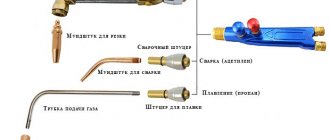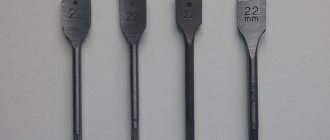To find out how to charge an alkaline battery at home, you need to study the features of such devices. The battery contains an electrolyte - an aqueous solution of sodium or potassium hydroxide. The charging process is accompanied by a number of chemical reactions.
Alkaline battery voltage.
How dangerous is electrolyte and its vapor?
Therefore, it is important to know why electrolyte is dangerous: It is an explosive substance that should not be near a flame. The release of vapors can cause poisoning. Ingestion of vapors leads to swelling, spasms, asphyxia and gastrointestinal bleeding.
Interesting materials:
Is it possible to water onions with a solution of potassium permanganate? Is it possible to obtain a medical insurance policy by proxy? Is it possible to get a driver's license using a temporary ID card? Is it possible to win at Pyaterochka? Is it possible to change the gynecologist at the antenatal clinic? Is it possible to plant an orchid in one bark? Is it possible to plant peppers next to eggplants? Is it possible to see a friend's contacts on WhatsApp? Is it possible to checkmate with a bishop and a king? Is it possible to go to college to become a makeup artist?
Characteristics of alkaline batteries
| Battery types | Nominal capacity, Ah | Rated voltage, V |
| NK-28 | 28 | 1,25 |
| NZh-22 | 22 | 1,25 |
| NK-55 | 55 | 1,25 |
| NZh-45 | 45 | 1,25 |
| NK-80 | 80 | 1,25 |
| NZh-60 | 60 | 1,25 |
In the battery type designation, the letters indicate the electrochemical system of the battery:
- “NK” - nickel-cadmium;
- “NZH” - nickel-iron;
- The numbers after the letters indicate the nominal capacity of the battery in ampere-hours.
Charging alkaline batteries and batteries
Charge from any DC source. Automatic charging without constant monitoring of parameters is provided by automatic chargers of the UZPS series. To charge, connect similar batteries or batteries in series. The number of connected batteries is determined by the voltage of the current source and the voltage of the battery at the end of the charge. For a serviceable and correctly switched-on battery, the voltage at normal charging current should be:
- at the beginning of the charge 1.40 V...1.45 V;
- at the end of the charge 1.75 V - 1.85 V.
When using batteries and batteries, use the following charging modes:
- Normal - 6 hours with normal current;
- Reinforced - 12 hours with normal current, it is reported:
- upon commissioning;
- every 10 cycles, and for irregular work once a month;
- after changing the electrolyte;
- after deep discharges below the permissible final voltages, as well as after discharges with weak currents, alternating with breaks for 16 hours or more.
Overcharging improves the performance of alkaline batteries.
- Accelerated - 2.5 hours with double the normal current and 2 hours with normal current.
Nickel - cadmium and nickel-iron batteries can be charged with a weaker current, increasing the charge time accordingly, but reducing the current by more than half is not recommended.
ATTENTION! Low current charges will degrade the performance of alkaline batteries, so only use them when absolutely necessary. When charging, do not allow the electrolyte temperature to rise above 45° C for composite electrolytes, and above 35° C for electrolytes without the addition of caustic lithium. If the temperature rises above the specified temperature, interrupt the charge and allow the batteries to cool. Charge batteries outdoors in winter at temperatures below minus 10° C (up to minus 30° C) with normal current for 7 hours. If it is necessary to charge batteries below minus 30° C, insulate them by covering them with felt, tarpaulin or other material.
Note. Nickel - iron batteries are not recommended to be charged at temperatures below minus 10° C.
During charging, do not allow the electrolyte to splash out. Before charging, check and bring the electrolyte level to normal every 10 cycles. Check that there is no short circuit between the walls of adjacent batteries as a result of possible swelling of the housings. If there is a short circuit, the battery voltage will be significantly lower than the nominal one. To detect shorted batteries, measure the gaps between them and measure their voltages. Unscrew the plugs of batteries in contact immediately. If, after eliminating the short circuit, the gap between the batteries is less than 3 mm, insulate them with a sheet of thin hard rubber, vinyl plastic or rubber. After eliminating the short circuit, give the batteries an increased charge.
Chargers for traction batteries
Automatic chargers
Video description
What is an alkaline battery?
Batteries differ in shape. Some are shaped like a cylinder, others are flat. The latter are also called tablets. They are used for portable devices, such as wristwatches. Such power supplies provide voltages from 1.5 to 9 V. The capacity of the batteries in question usually does not exceed 3000 mA/hour. In some cases this parameter may be larger.
Cross-section of a battery Source 3batareiki.ru
Application area
Alkaline batteries can be used as:
- traction;
- and starter devices.
They are installed on mine electric locomotives, locomotives, and passenger cars. Provide different types of alarms and emergency power supply systems.
Indispensable when storing products in warehouses: all kinds of loading machines are equipped with just such batteries. Can be used to start power units (ICE).
The batteries in question are used in portable equipment, home and professional electric tools.
We constantly come into contact with them at home. We turn on the stereo, TV, and use the remote control. Every day we use phones and cameras that use AA batteries as a power source.
It is rare, but common, to use them as starter devices on trucks and military equipment.
Discharge of alkaline batteries and batteries
Alkaline batteries can be discharged to the final voltage:
- with a 5-hour or longer discharge mode, not lower than 1.0 V;
- with a 3-hour discharge mode not lower than 0.8 V;
- with a 1-hour discharge mode not lower than 0.5 V;
Determine the final discharge voltage of rechargeable batteries as the product of the number of batteries in the battery and the final voltage of an individual battery, according to the discharge mode. Automatic discharge with specified discharge parameters is provided by battery testing devices.
When operating accumulators and batteries, perform control electrical tests every 100 - 150 cycles. Give accumulators or batteries two running cycles. Charge using normal mode current for 12 hours, discharge using normal mode to a final voltage of 1.0 V for one of the batteries.
Carry out the control cycle in normal mode.
During the control cycle, measure the voltage of each battery:
- when charging - at the beginning and end of the charge;
- during discharge - at the beginning of the discharge, after 6 hours, 7 hours and after 8 hours of discharge.
Replace batteries that have a voltage of 1.0V or lower after 6 hours of discharge.
Note. Perform control tests after changing the electrolyte.
Nickel-iron batteries can be operated at temperatures not lower than minus 20° C, and they provide at least 70% of the rated capacity. Nickel-cadmium batteries - not lower than minus 40 ° C, while they provide 20% of the nominal capacity.
Features of choice
To choose the right alkaline battery, you need to pay special attention to key parameters. They are extremely important for the right purchase:
- First of all, we look at production. You should always check the date of manufacture. If the battery was manufactured more than six months ago, then it is not worth purchasing it. Such devices will discharge - the memory effect will record this.
- Capacity indicator. The period of use depends on the container. Many people purchase batteries with a large capacity. In this case, the generator will not be able to cope with its task. But it’s not worth purchasing a smaller capacity. Many charges contribute to the breakdown of the entire unit. To choose the right container, you need to study certain characteristics specified in the technical instructions.
- Device polarity. Batteries can vary in polarity. When choosing a unit, you will need to focus on the location of the polarity of the electrodes.
- Battery cost. The price of a battery depends on the elements that are included in the composition, the manufacturer, capacity, and power. The better the performance, the higher the price.
The alkaline unit is durable and reliable. It is very profitable to purchase such products for traction equipment or large vehicles. You just need to choose the right model, having first studied all the characteristics.
This was a brief description and application of alkaline batteries. The information will be useful for correct operation and correct purchase.
Life time
Potassium-lithium alkaline electrolyte, with proper operation and high-quality preparation, is one of the longest serving in its field. It has been experimentally proven that this liquid can withstand more than 1000 charge-discharge cycles, which is simply a huge number of such procedures. However, when using alkaline electrolytes, it is worth keeping in mind the factors that reduce their service life. The most important of these are the following:
- Frequent insufficient battery charging;
- Systematic deep discharge of the battery;
- Insufficient amount of electrolyte in the separator;
- Long-term use of electrolyte at high ambient temperatures;
- Fluid operating temperatures are too high and frequent.
Without allowing for the presence of these factors specifically in your situation, you can extend the service life of the battery and alkaline electrolyte separately by several times
Note that when using such liquids, it is also important to constantly refill the battery with the same type of electrolytes. Otherwise, battery life will be reduced.
Characteristics of alkaline batteries
| Battery types | Number of batteries in the battery | Nominal capacity, Ah | Rated voltage, V |
| 10NK-28KT | 10 | 28 | 12,50 |
| 10NZh-22KT | 10 | 22 | 12,50 |
| 17NK-28K | 17 | 28 | 21,25 |
| 17Нж-22К | 17 | 22 | 21,25 |
| 4NK-55KT, 4NK-55K | 4 | 55 | 5,00 |
| 4НЖ-45КТ, 4НЖ-45К | 4 | 45 | 5,00 |
| 5NK-55K | 5 | 55 | 6,25 |
| 5Нж-45К | 5 | 45 | 6,25 |
| 10NK-55K | 10 | 55 | 12,50 |
| 10Нж-45К | 10 | 45 | 12,50 |
| 4NK-80KT | 4 | 80 | 5,00 |
| 4NZh-60KT | 4 | 60 | 5,00 |
| 5NK-80KT | 5 | 80 | 6,25 |
| 5NZh-60KT | 5 | 60 | 6,25 |
| 10NK-80K | 10 | 80 | 12,50 |
| 10Нж-60К | 10 | 60 | 12,50 |
Putting into operation batteries and batteries that have not been used or have been stored in a discharged state without electrolyte:
- Before putting into operation, batteries, both individually operating and those assembled into batteries, must be subjected to training in order to obtain the nominal capacity;
- Remove dust and salt from the surface of the batteries and batteries with a clean rag, check the correct serial connection of the batteries in the battery and tightly tighten the nuts of the inter-cell connections. Remove traces of rust on parts that are not varnished with a rag soaked in kerosene;
- Fill the batteries with electrolyte, let stand for at least 2 hours (to saturate the plates) and check the voltage on each of them with a voltmeter. If there is no voltage on the battery, leave it for another 10 hours, then check the voltage again. If it is missing, replace the battery;
- After 2 hours of soaking, check the electrolyte level above the battery plates, which should be at least 5 and no more than 12 mm above the edge of the plates.
Strict adherence to the electrolyte level (no more than 12 mm) is required to prevent electrolyte from splashing out of the battery during charging.
Note. To reduce the electrolyte level in the battery, use a rubber bulb.
After establishing the electrolyte level, apply currents to the batteries for three training cycles according to the table.
| Battery types | Charge | Discharge | ||
| Time, h | Current, A | Current, A | Final voltage, V | |
| NZh-22 | 6 | 5,5 | 2,8 | 1,0 |
| NK-28 | 7,0 | 2,8 | ||
| NZh-45 | 11,2 | 5,5 | ||
| NK-55 | 14,0 | 5,5 | ||
| NZh-60 | 15,0 | 8,0 | ||
| NK-80 | 20,0 | 8,0 | ||
The voltage at the end of the discharge should be at least one volt on the worst battery. If the supplied capacity is not lower than the nominal one, the batteries can be put into operation.
Note. To improve the quality of batteries, it is recommended to replace the electrolyte with fresh one before putting it into operation.
Sometimes batteries have a temporary decrease in capacity after a long period of inactivity. In these cases, after the control cycle, charge in the normal mode, and discharge for eight hours at a constant current, without paying attention to the battery voltage.
At the end of the discharge, maintain normal current strength using an external current source. To do this, connect the batteries to the charger so that the positive pole of the battery is connected to the minus of the charger, and the negative to the plus. After such a deep discharge, charge with normal current for 16 hours and put the batteries into operation. Carry out subsequent charges within 6 hours with normal current in each battery.
Reading the legend: markings
There are traction batteries manufactured in various countries. We will look at the abbreviations used on domestic products.
Domestic marking
So, if the marking contains letters preceding the numbers, then they indicate the number of elements used in the battery.
Below are letters indicating the area of application:
- T – traction type;
- TP – diesel locomotive version;
- B – carriage purpose.
Letters indicating the type: NZh - nickel/iron battery. And so on.
The letter "K" indicates the electrode block combination. The letter “Ш” indicates the purpose of the battery for use in mines and mine workings.
If the letters are followed by numbers, this is the value of the nominal capacity of the battery, which is expressed in Ah. The letters “P” can be placed - a plastic case, or the letter “B” indicates a high version, and “M” indicates modernization.
The letter “U” indicates the possibility of using the battery in a temperate climate. The letter “T” implies the operation of the battery in the tropics.
Next, the GOST for use is prescribed: number 2 indicates the possibility of working above ground, and number 5 allows working underground.
International marking
In the international classification, the letter F is a battery using a nickel/iron combination. The letters indicate different discharge modes:
- L ─ up to 0.5 degrees Celsius;
- M ─ (0.5─3.5) degrees Celsius;
- H ─ (3.5─7) degrees Celsius;
- X ─ more than 7 degrees Celsius.
Alkaline batteries are a multifunctional product, found in various combinations and used in a wide variety of industries. We use a 12V alkaline battery almost every day, and specialists and maintenance personnel can see them as traction devices.
However, any operation of an alkaline battery requires increased attention and proper maintenance. These measures significantly increase the service life of batteries.
Alkaline batteries must be maintained in strict accordance with the manufacturer's recommendations. Personnel who are not technically trained should not be allowed to work.
If you have any questions, leave them in the comments below the article. We or our visitors will be happy to answer them
Storage rules
Devices are available for long-term or temporary storage. When purchasing a new battery, be sure to check the plugs for their fit.
We recommend: Repair and restoration of Ni-Cd batteries
Great attention must be paid to checking the valve rubber. The operation of the entire battery will depend on its condition. To prevent the paintwork from peeling off, the body must be treated with lubricant.
For proper storage, you will need to perform a number of actions:
- Discharge to 1 volt.
- Pour out all the electrolyte.
- Remove dust, dirt and salt.
- Renew the varnish coating.
If the battery will remain idle for 1-10 months, it is necessary to periodically check its performance. All plugs must be pressed tightly against the device. Transportation can only be carried out if the battery is prepared for long-term storage. It is not advisable to store alkaline batteries with other power sources.
Design features
The battery consists of nickel hydroxide, as well as some other elements. Due to the fact that the composition contains graphite, this has a positive effect on electrical conductivity. Various impurities ensure the normal performance and stability of the device.
To prepare the negative element, a metal alloy of cadmium, nickel and a certain powder is used. In each case, the battery will have its own characteristics. The electrolyte includes lithium monohydrate. Thanks to this element, long-term operation of the unit is ensured.
The battery contains the following components:
- Insulating layer made from quality raw materials.
- The gasket is made of plastic, which is complemented by a special valve.
- Frame.
- Conclusions and contacts.
These are all the basic elements of an alkaline battery. All components are made of reliable materials, and therefore there are no problems with operation.
Chemical processes
The operating principle is very simple. When complete discharge occurs, nickel hydroxide begins to react with the alkaline solution. As a result, nickel oxide hydrate is formed. A very similar process will occur at the minus pin. Certain elements begin to form.
When the charging process occurs, a reverse reaction occurs. The result is nickel hydroxide, which restores the negative electrode.
Alkaline differs from acidic aggregates in that the substance produced during the chemical reaction will not dissolve. It is also unable to react with similar components. To put it simply, the operating principle of the power source depends on certain rules.
This power source must be fully charged. If the battery is not fully charged, the period of use will be greatly reduced. But at the same time, you cannot recharge the device, as this will lead to severe overheating. As a result, the electrodes will simply collapse.
Electrolyte replacement
The electrolyte must be replaced after 100 and 150 cycles. Before the change, you will need to completely discharge the battery and ensure that the rated current is up to 1 V.
The electrolyte must be removed from the battery extremely carefully. To prevent sediment from remaining, you must shake the battery while cleaning.
After the electrolyte has been poured out, you need to rinse the unit thoroughly with distilled water. You can also use an alkali solution.
When the cleaning process is completed, you can immediately add new electrolyte. Afterwards it will need to be left in a flooded state for about 3 hours. Only then can the density of the new substance be checked.
You should know that the electrodes and plates should not be dry. If you neglect this rule, corrosion will appear inside.
How the battery works
It uses a cathode that includes the following substances:
- 7%-10% graphite;
- 25%-30% potassium hydroxide solution;
- 65%-75% manganese dioxide;
- 1% is binders.
Lithium or sodium hydroxide can also be used as an alkali. To make the anode, purified zinc with additives that protect against corrosion is used. Previously, lead and mercury were used for this purpose, but now they have switched to using bismuth and aluminum for this purpose.
Batteries made up of several batteries Source rich—house.ru
The design of such an alkaline battery includes the following elements:
- The inside of the battery contains zinc paste, which is a powder. This form ensures more efficient operation compared to salt batteries.
- Zinc is mixed with a special gel. It generates negative potential. A brass rod removes this charge to an external terminal.
- A manganese dioxide cathode mixed with a graphite thickener is separated from the zinc paste using a special composition.
- The positive potential is displayed on a steel glass with a nickel coating. It is isolated from the battery shell.
During operation, a small amount of gas is generated. Its pressure is controlled by a special gasket. The fuse is a special membrane. If there is a lot of gas, it bursts and it passes out.
This video covers alkaline batteries:
Chemical processes
How to charge a dry-charged motorcycle battery?
Zinc oxidation reactions take place at the anode. First, zinc hydroxide is formed:
Zn + 2OH− → Zn(OH)2 + 2e−
Which then decomposes into zinc oxide and water.
Zn(OH)2 → ZnO + H2O
At the cathode, in turn, reduction reactions of manganese (IV) oxide into manganese (III) oxide occur:
2MnO2 + H2O + 2e− → Mn2O3 + 2OH−
In general, the chemical processes inside a cell when using KOH as an electrolyte can be described by the following equation:
Zn + 2KOH + 2MnO2 + 2e− → 2e− + ZnO + 2KOH + Mn2O3
Unlike a salt cell, in an alkaline cell the electrolyte is practically not consumed during the battery discharge process, which means that a small amount is sufficient. Therefore, an alkaline element contains on average 1.5 times more manganese dioxide.











